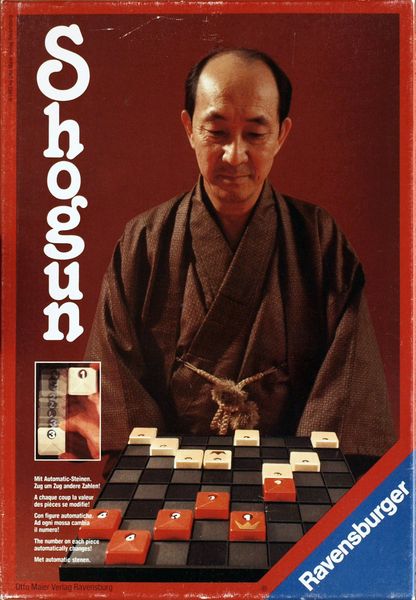Shogun (1976) Board Game
Shogun is a classic two-player abstract strategy game released in 1976 by Airfix. Designed by Teruo Matsumoto and featuring artwork by Walter Schels, this game is set in Japan during the Sengoku Period, a time of intense conflict and power struggles among warlords.
Game Components of Shogun
How To Setup Shogun
Setup involves each player starting with three armies and deploying them on the map. Province cards are dealt out to determine initial provinces, with the remainder available for players to claim. The provinces of Kyoto and Osaka start as neutral fortresses, each garrisoned by five Ronin, making them harder to capture.
Gameplay Mechanics and Game Objective
Player Experience
Shogun offers a rich and strategic gameplay experience, capturing the treachery and complexity of the Sengoku Jidai period in Japan. The programmed movement mechanism ensures simultaneous planning, minimizing downtime. However, the game can become imbalanced, with players who fall behind having little chance of catching up.
Pros
Cons
Personal Thoughts on Shogun
Shogun is ideal for fans of strategic wargames and those interested in Japanese history. However, it may not be the best fit for casual gamers due to its complexity and potential for lengthy gameplay. The game’s mechanisms are fascinating but could benefit from modern updates to address balance issues. Despite its flaws, Shogun remains a compelling and thematic experience for those willing to delve into its strategic depths.
We are supported by our audience. When you purchase through links on our site, we may earn an affiliate commission, at no extra cost for you. Learn more.

